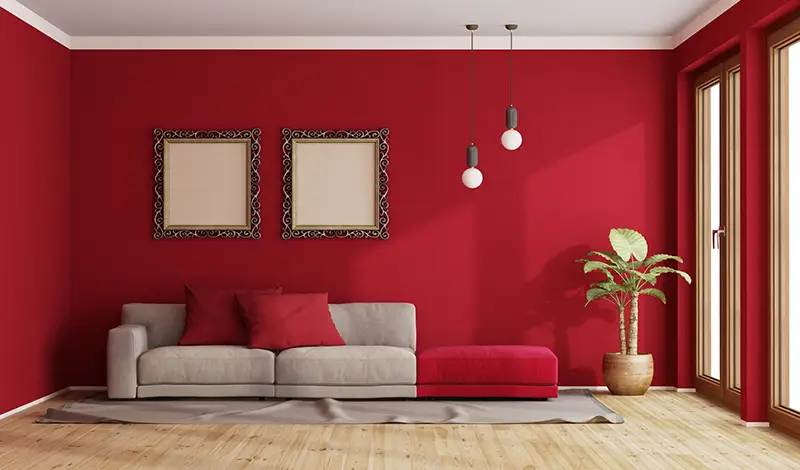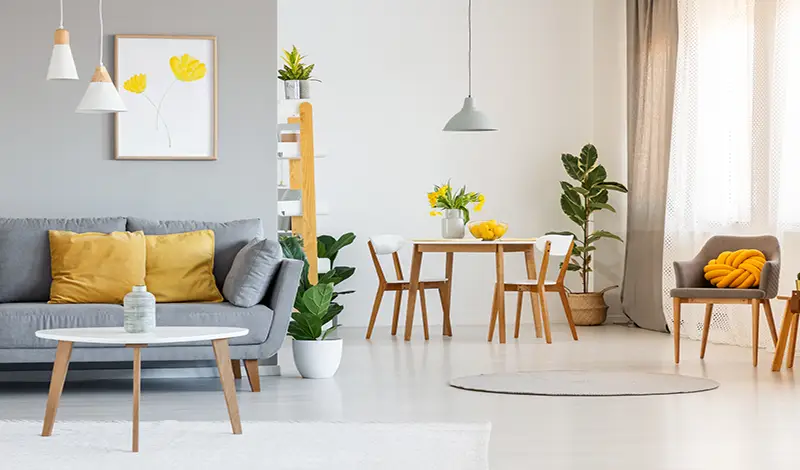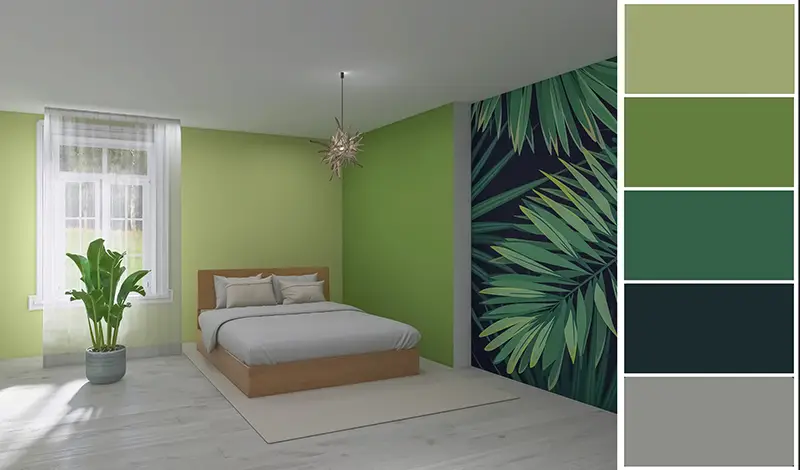How to Use Color to Boost Well Being in Your Home
Published on March 7, 2024 | 5 Minute read

Melanie
Ortiz Reyes
Content Specialist
Creating a living space that promotes well-being is a goal that resonates with many homeowners. While factors like furniture and layout play crucial roles, the strategic use of color can significantly impact the overall atmosphere of your home.

Understanding Color Psychology
Color psychology explores the emotional and psychological effects that colors have on individuals. Different colors evoke distinct feelings and moods, making them powerful tools in shaping the ambiance of your home. By tapping into these psychological responses, you can create a harmonious environment that positively influences your well-being.
Calming Blues for Tranquility
Blue is often associated with calmness, serenity, and tranquility. Incorporating various shades of blue into your home can create a soothing atmosphere, making it an excellent choice for bedrooms, bathrooms, or any space where relaxation is key. Consider soft blues like aqua or powder blue for a calming effect, or opt for deeper hues like navy for a sense of elegance and depth.

Energizing Reds for Vitality
Red is a color that commands attention and energy. It stimulates the senses and is known to increase heart rate and blood flow. While too much red can be overwhelming, incorporating touches of this vibrant color in spaces where energy is needed, such as the dining area or kitchen, can enhance vitality. Consider red accents like throw pillows, artwork, or kitchen accessories to infuse energy without overpowering the room.
Earthy Greens for Balance
Green, often associated with nature, growth, and balance, is a versatile color that can bring a sense of calmness and rejuvenation to your home. Use various shades of green in different rooms to create a harmonious flow. Light greens can be refreshing in bathrooms, while deeper greens can add a touch of sophistication to living areas. Introduce indoor plants to enhance the natural, grounding effect of the color green.

Cheerful Yellows for Positivity
Yellow is a color that exudes warmth, positivity, and happiness. Incorporating shades of yellow in communal areas such as the living room or kitchen can create a welcoming and uplifting atmosphere. Opt for soft yellows for a subtle effect or bolder tones for a burst of energy. Yellow accent pieces, like cushions, artwork, or even a statement furniture piece, can instantly brighten up a room.
Serene Neutrals for Versatility
Neutral colors such as whites, beiges, and grays provide a timeless and versatile palette for any home. These colors create a sense of openness and can be easily paired with other hues to evoke specific moods. Neutrals are ideal for creating a clean and uncluttered look, allowing other elements in the room to shine. Consider incorporating neutral tones in larger furniture pieces and walls for a balanced backdrop.

Practical Tips for Using Color in Your Home
Now that we've explored the emotional impact of various colors, let's delve into practical tips on how to use color effectively in different areas of your home:
Consider Room Functionality
- Before choosing a color scheme, think about the primary function of each room. Bedrooms may benefit from calming colors, while vibrant hues can be suitable for social spaces like the living room.
Use a Variety of Shades
- Embrace the versatility of each color by incorporating different shades within the same family. This adds depth and visual interest to your space, preventing it from feeling monotonous.
Balance Bold and Neutral
- If you're drawn to bold, vibrant colors, balance them with neutral tones to avoid overwhelming the space. Use bold colors as accents or focal points, and let neutrals create a backdrop for a harmonious look.
Experiment with Color Accents
- Not ready for a full room makeover? Experiment with color through accents like throw pillows, rugs, curtains, and artwork. These elements can be easily swapped out to refresh the look of a room.
Consider Lighting Conditions
- Natural and artificial lighting can influence how colors appear in a room. Test paint samples in different lighting conditions before making a final decision, and choose colors that complement the available light sources.
Personalize with Personal Preferences
- While color psychology provides general insights, personal preferences play a crucial role. Choose colors that resonate with you and bring joy, as your emotional connection to your surroundings is paramount.
Transforming your home into a sanctuary that fosters well-being involves a thoughtful consideration of color. By understanding the psychological impact of different colors and strategically incorporating them into your living space, you can create an environment that promotes relaxation, energy, and positivity. Whether you opt for calming blues, energizing reds, earthy greens, cheerful yellows, or versatile neutrals, the key is to strike a balance that resonates with your personal style and enhances the overall atmosphere of your home. Take the leap into the world of color, and let your living space become a canvas for well-being and harmony.